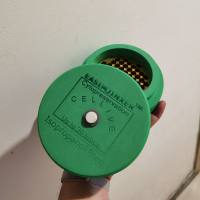Coupled One-Step Reverse Transcription and Polymerase Chain Reaction Procedure for Cloning Large cDNA Fragments
互联网
互联网
相关产品推荐

///蛋白Recombinant Avena sativa Endochitinase重组蛋白Endochitinase; EC 3.2.1.14; Fragments蛋白
¥2616

EASIMJINXER CryoKing 30-Well Cryoboxes, -1℃(-33.8℉) Cell Freezing Container, EVA Freezer Boxes, Laboratory Procedure Cooling Box for 1.2ml or 2.0ml Vials, 1 Pcs Freezing Containers
¥598

LARGE1 antibody|LARGE1抗体
¥1140

Recombinant-Synechococcus-elongatus-Photosystem-II-44-kDa-reaction-center-proteinpsbCPhotosystem II 44 kDa reaction center protein Alternative name(s): PSII 43 kDa protein Protein CP-43 Protein P6
¥12880

Fibrinogen Gamma Chain重组蛋白|Recombinant Human FGG Protein
¥1790
相关问答

